Claudia Faehrenkemper, Werne, Germany
Claudia Fährenkemper (1959, Germany) studied art and geography at the University of Düsseldorf, photography at the University of Applied Sciences in Cologne (class of Arno Jansen) and at the Art Academy in Düsseldorf (class of Bernd and Hilla Becher), where she finished her studies as master class student of Nan Hoover in 1995. Her work has been exhibited in galleries and museums in Europe, USA and Canada and will be presented in Australia at this year’s Ballarat International Foto Biennale. She also gives lectures and workshops and teaches.
Fermynwoods Wild Flower Project 2009
- color photograms on black and white paper
Staying in a cottage directly besides a wildflower meadow in summer 2009 I wanted to preserve the plants individuality and singularity around me directly and fast with very poor instruments. I decided to use the simple photogram process from early times of photography when Fox Talbot did his photogenic drawings of fern and Anna Atkins these of algae.
I collected the plant specimen, put them on old silver gelatine paper and arranged the single plant in its best shape, pressed it with a thick piece of glass and let it exposure by sunlight outside on the bottom for 1-3 hours. Finally I took glass and plants away, fixed and washed the paper.
During the image process there is an amazing reaction of the plants substances and fluids with silver gelatine paper areas just around the plants, caused by sunlight and warmth under the glass. The pressure of the thick piece of glass helps to evoke a clear shape of the plant and some brilliant details of blossom and leave structures with a rich variety of red, brown, yellow, grey colours beside the white shape of stem and blossom. The impression is in a way ghostly, the real object is gone but its character and traces of life and energy still remains in the image.
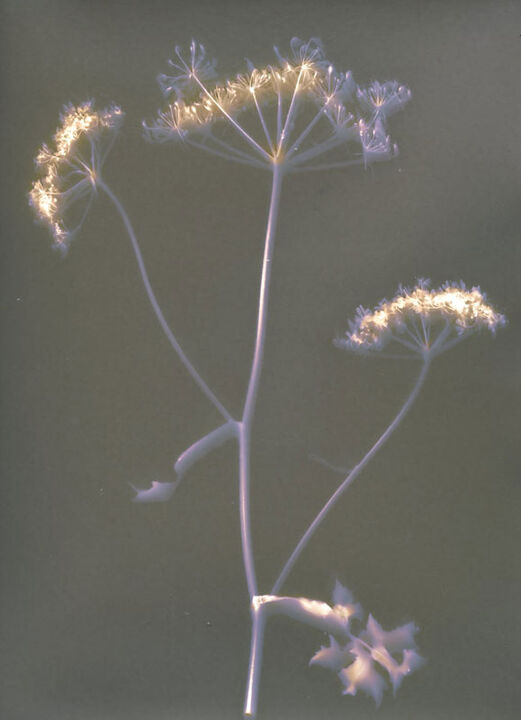
Photomicrographs
My photomicrographs reveal a world, which is only visible trough a scanning electron microscope. My aim is the sensual experience of filigree constructions and morphological details as sculptures and spaces of the microcosm.
Photmicroscopy gives us an idea of relationships in our world. The conceptual work in series makes comparisons possible and shows the variety and individuality of forms.
All series refer to the human being, remind us of embryonal and foetal development, of portraits, gestures and habitation. The microcosm seems to be strange for us, but in fact there are surprising similarities to our cosm.
The series of insects is called IMAGO (latin "image"). In zoology: adult insect which has passed through all states of development.
The series of amphibian larvae is called METAMORPHOSIS (greek), change, transformation of forms. In zoology: a development in which the hatching animal is very different from the final shape. Most of the insects but also vertebrates, like froges, are first in the state and mode of living as a larva and later change into a pupa.
The series of seeds is called EMBRYO (greek), germ of a living being. In botany: the developed plant in the grain of seed. In zoology and anthropology: the developing organism out of a fertilized egg cell, being in a cover, an egg shell or a body.
The series of crystals is called HABITUS (latin), appearence and behavior, habit. Shape of human beings, animals, plants and crystals.
The photomicrographs show the original objects with a magnification of 30 to 3000 times.
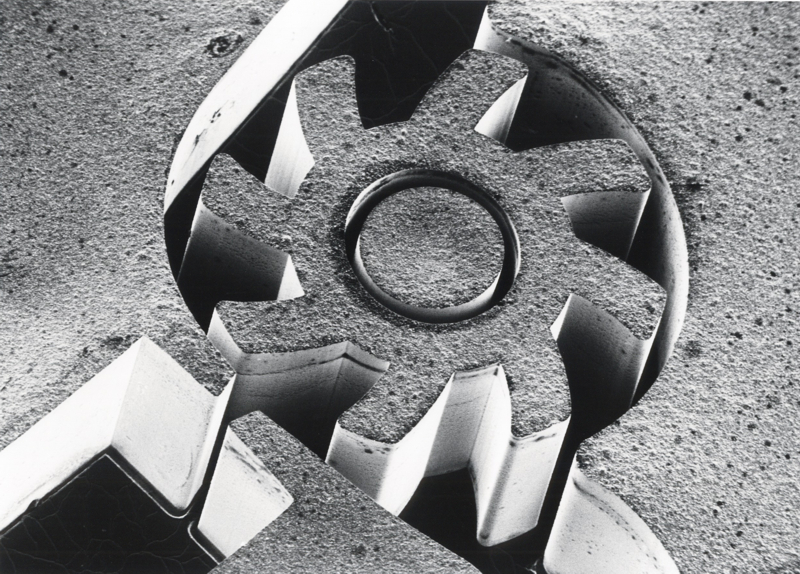
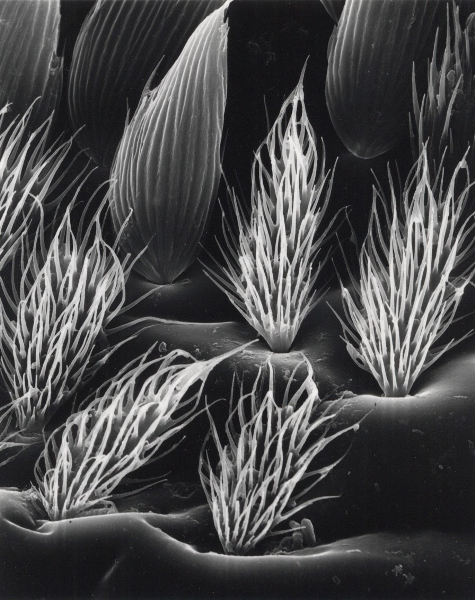
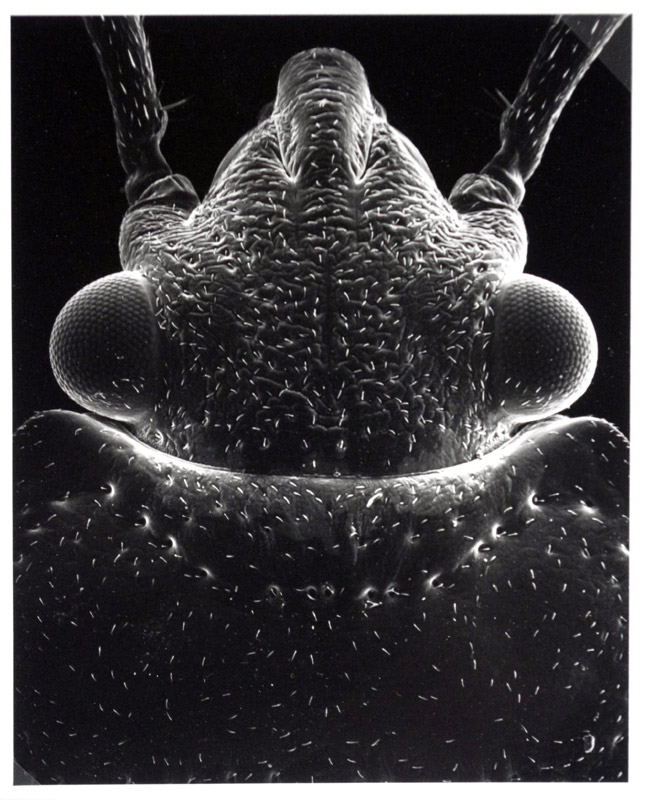
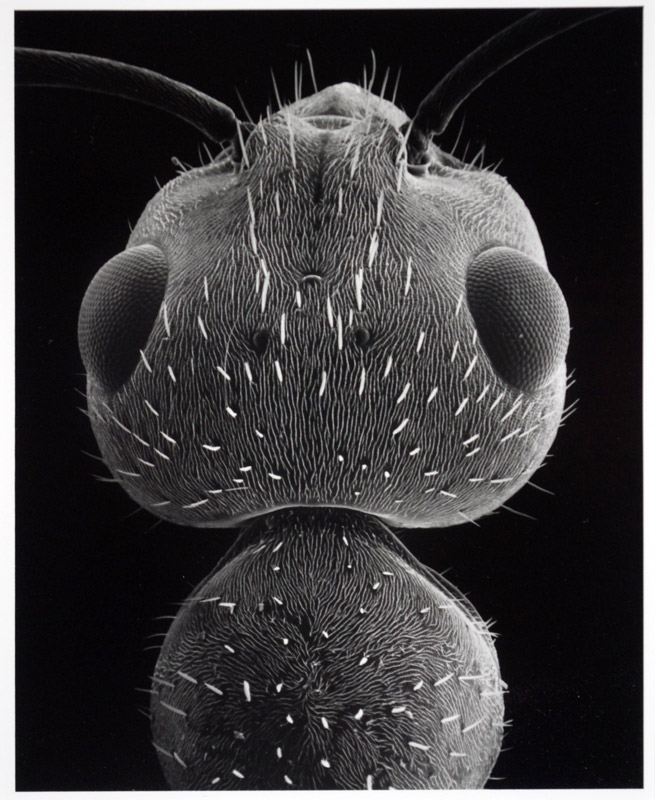
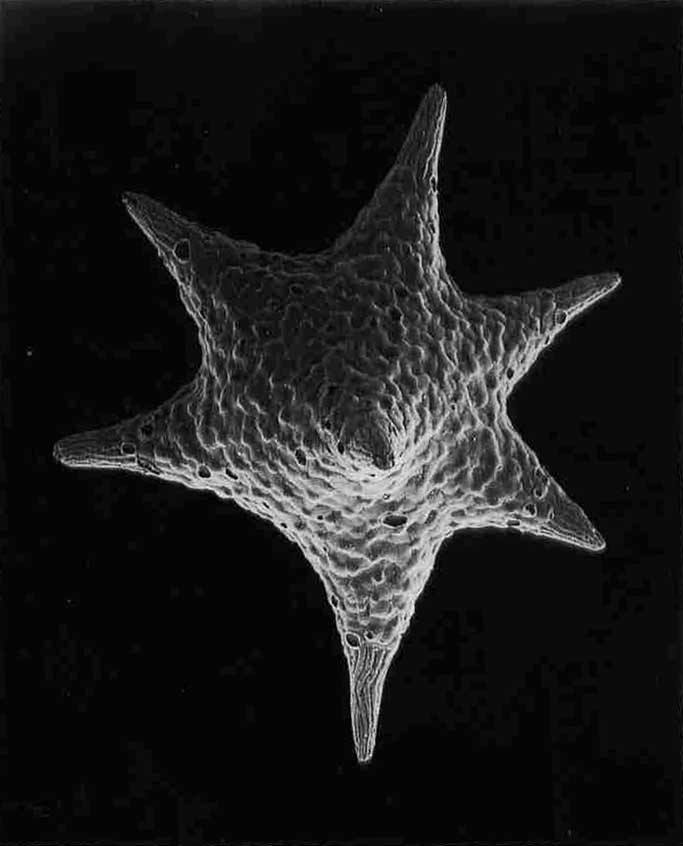
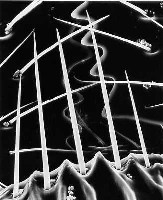
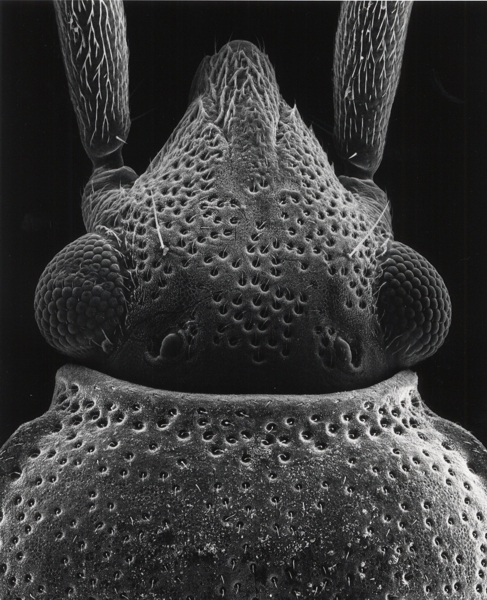
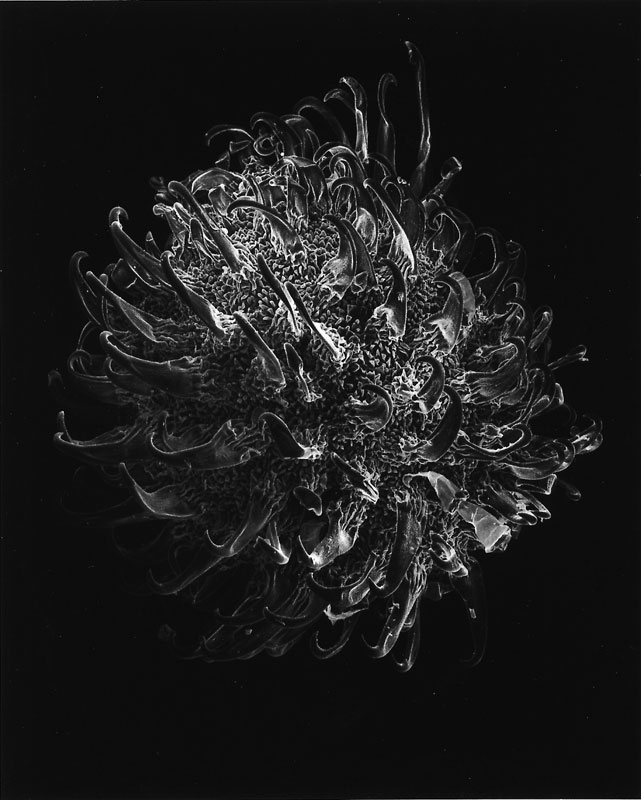
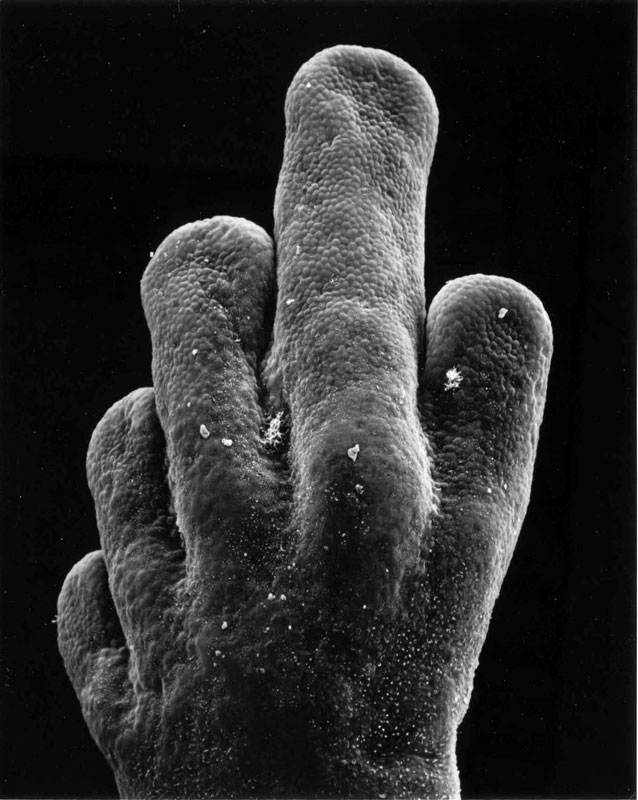
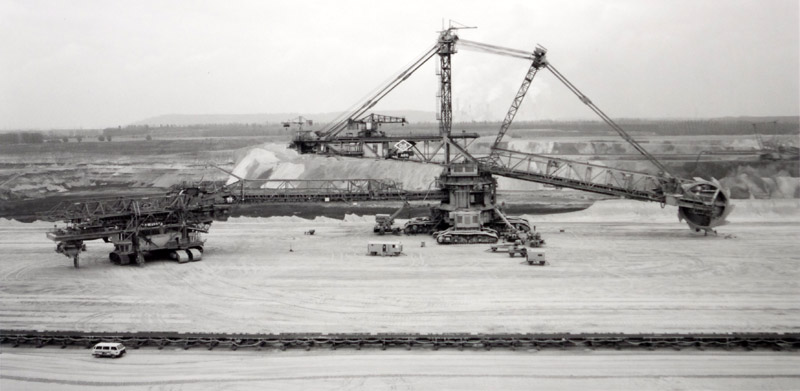
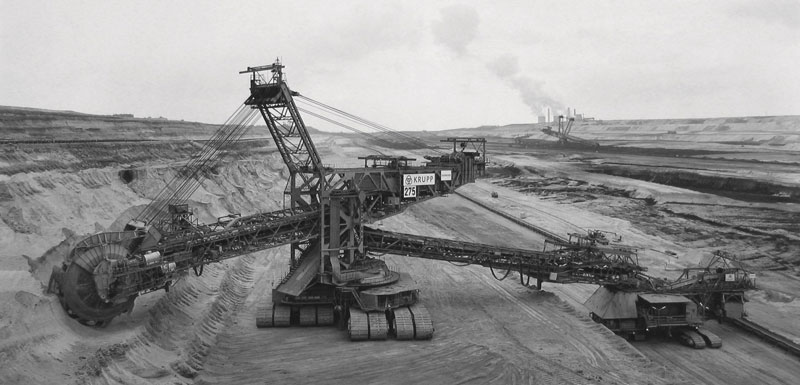
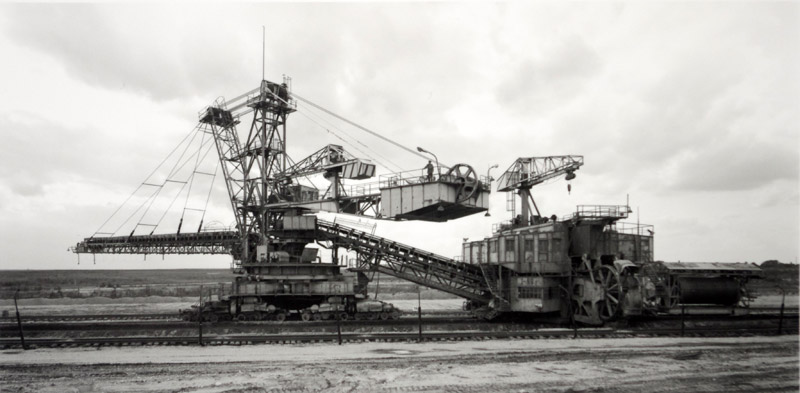
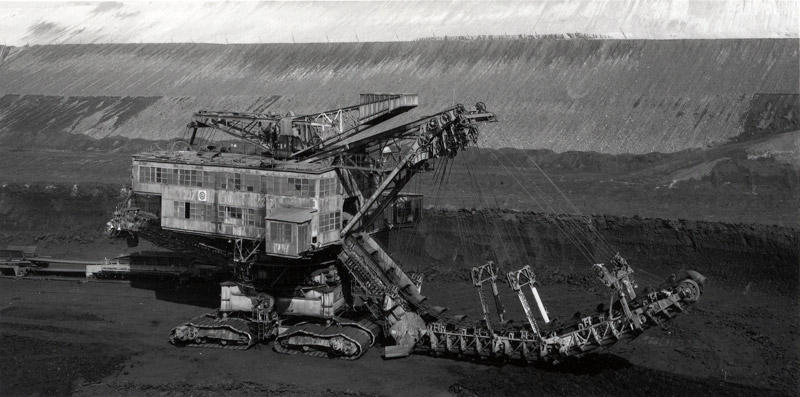
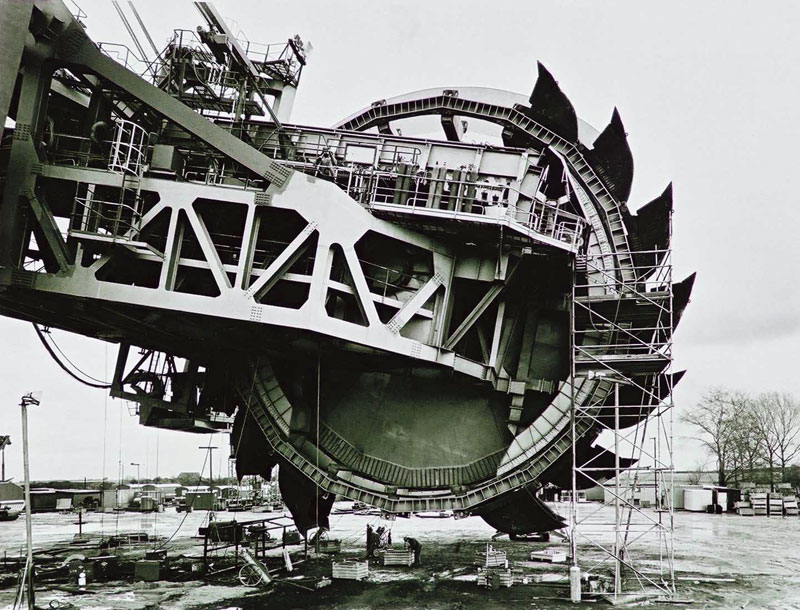
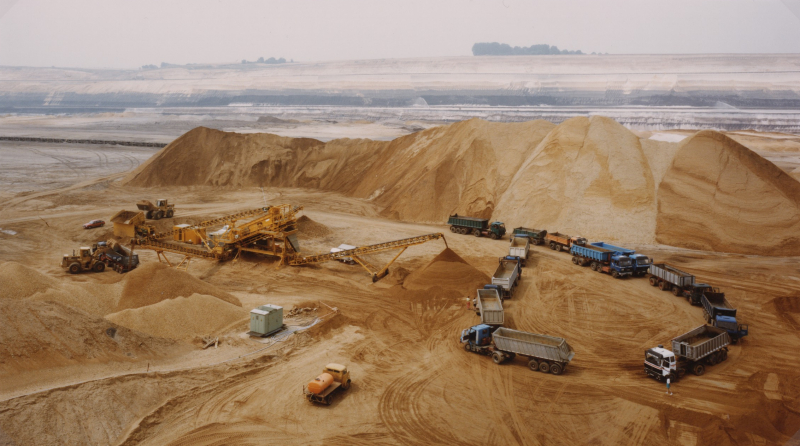
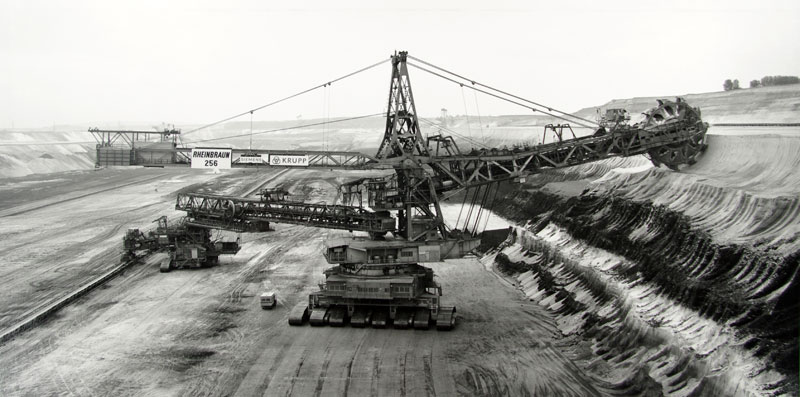
Other work
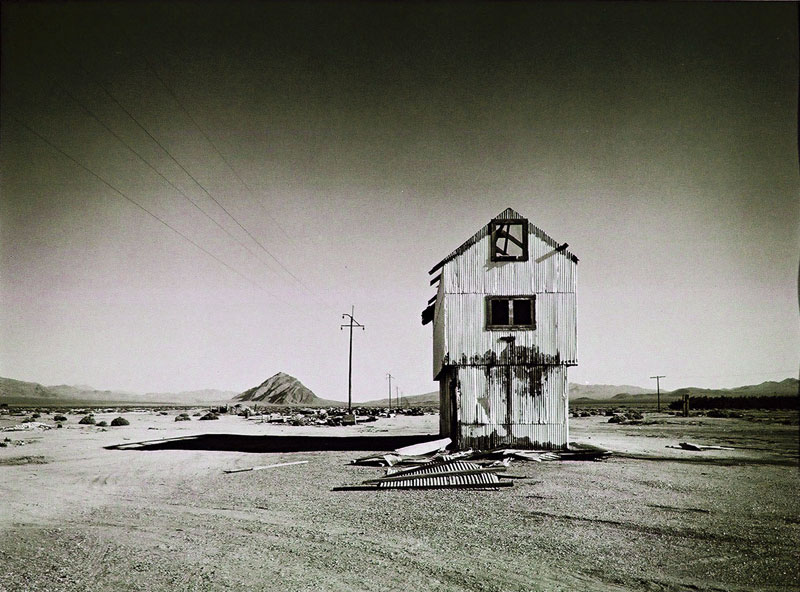
Opencast Mining Machinery
During 1989 and 1993, I worked with a grand view camera on an extensive documentation project in opencast mining areas all over Germany. I started with photographs of the mining landscape but at some point my interest turned to these amazing machines, realizing that they cause this particular industrial landscape. I made a series of details during the last ten months of the construction of one of these excavators (number 292) just in front of the mine Hambach in 1990/91. For exploring this machine from all possible perspectives I climbed up and inside wherever it was possible - trying to understand this huge machine by taking extremely precise images of the morphological details of its construction. Both, fascination and irritation led my investigation.
Standing in front of this excavator it is impossible to perceive it in its complete huge extension. Its length is 200 meters, its height 100 meters! These are the biggest movable and dynamic machines of the world. The excavator wheel is the central and most important part of this machine and moves daily up to 240000 cubic meters – a capacity which is unimaginable but responsible for an ongoing fast, complete and tremendous change of landscape and old structures. To give an idea of these dimensions I used workers or lorries as a scale. Only photography can scale down these huge machines and make the relationship of man, machine and landscape visible.
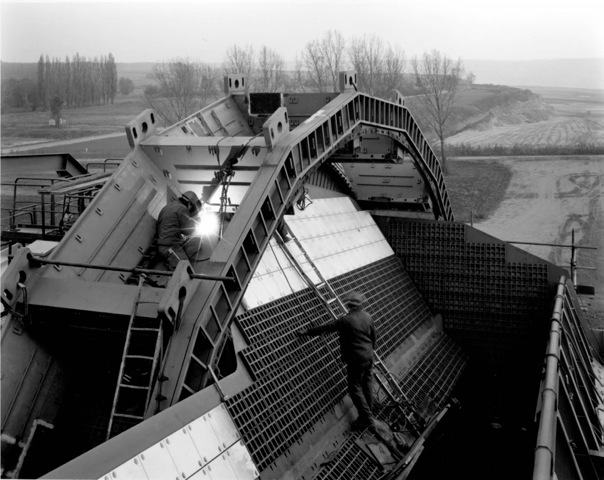
Books
Claudia Fährenkemper. Fördergeräte im Braunkohlentagebau, ed. Ulrika Evers, exh. cat.,Kreismuseum Peine
Claudia Fährenkemper. PHOTOMICROGRAPHS, ed. Christiane Stahl, Alfred-Ehrhardt-Stiftung, Cologne, with essays by Ann Thomas and Ludger Derenthal, Ostfildern-Ruit
Glühwürmchen? Strahlentierchen? Königskerze? Wunderliche fotografische Portraits von Claudia Fährenkemper, ed. Sabina Leßmann, with essays by Sabina Leßmann and Olaf Breidbach, exh. cat. Kunstmuseum Bonn
Claudia Fährenkemper. IMAGO – Insect Portraits, eds. Friedrich-Hundt-Gesellschaft, Münster, Art Galerie Siegen und Kunstverein Unna, DruckVerlag Kettler, Bönen
Claudia Fährenkemper. Opencast Mining Machinery, (with essays by Christoph Schaden and Daniel Stemmrich), exh. cat. Kunstverein Salzgitter
Collections
Hypo Vereinsbank, Munich (G)
Kreismuseum Peine (G)
Musée de L’Elysée, Lausanne (CH)
National Gallery of Canada, Ottawa (CAN)
Hans Hansen, Hamburg (G)
Museum für Kunst und Kulturgeschichte, Dortmund (G
Portland Art Museum, Oregon (US)
Martin Margulies, Miami (US)
Kunstmuseum Bonn (G)
Rheinisches Industriemuseum, Oberhausen (G)
Santa Barbara Museum of Art, Santa Barbara (US)
Wildling Art Museum, Los Olivos (US)
Sprengel Museum Hannover (G)
Federal Ministry of Food, Agriculture and Consumer Protection, Berlin (G)








